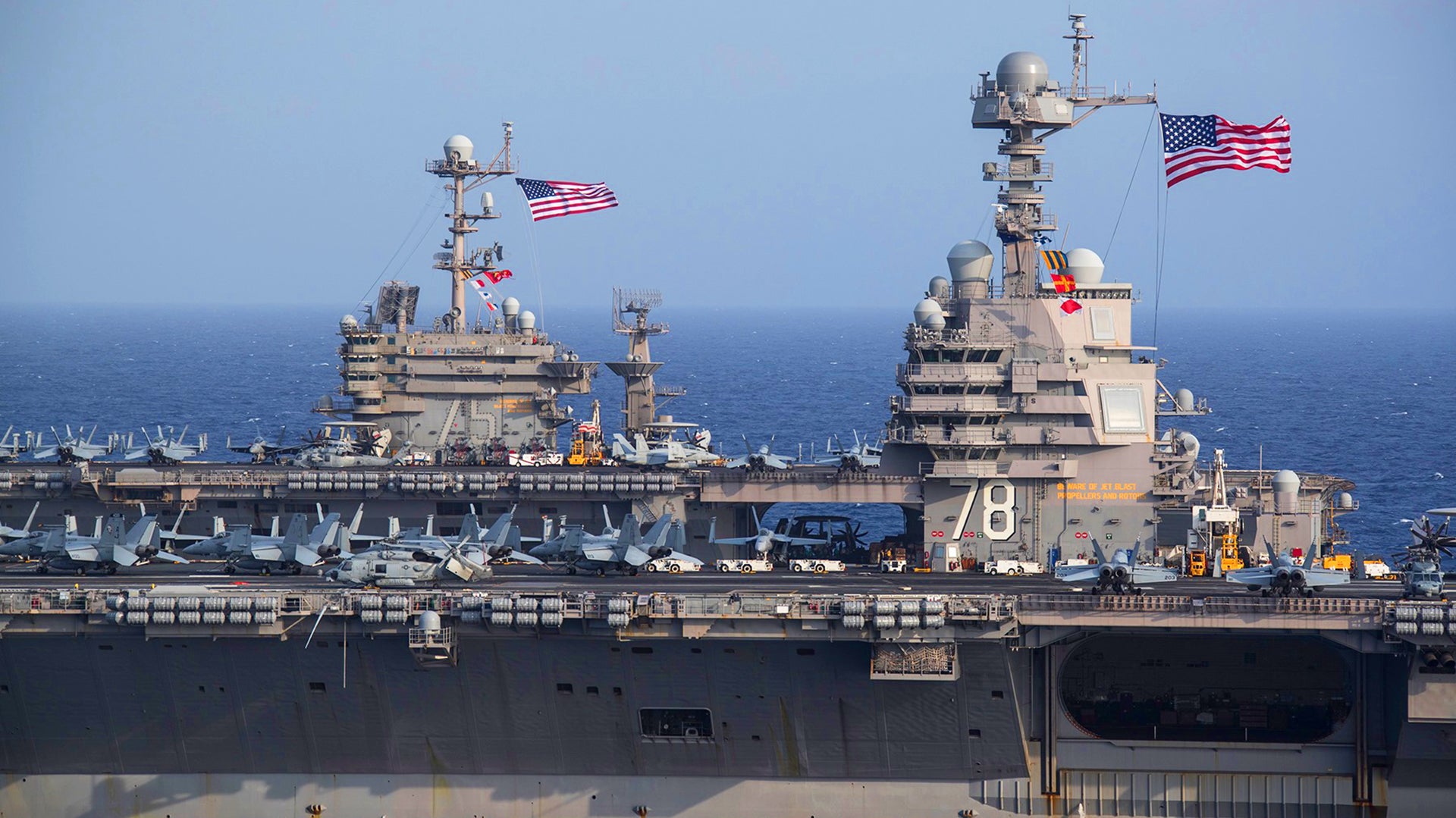The Navy’s $13B first of its kind Ford class supercarrier, the USS Gerald R. Ford (CVN-78), which now has Carrier Air Wing 8 embarked onboard, is slowly showing signs of improvement to its various systems after a litany of engineering setbacks, but it still has a long way to go before becoming available for actual operational deployments. As such, the Navy’s 10 Nimitz class carriers will continue providing for America’s national defense needs alone. Beyond their general configurations, the two classes have major differences, both outwardly visible and not. Pictures released by the Navy today showing the USS Harry S. Truman sailing alongside USS Gerald R. Ford give us our best visual comparison yet of the two classes.
The best image of the lot is seen below. It shows the differences in the island superstructures, which is the most radical visual change between the two classes. The Nimitz class’ superstructure has changed substantially over the years itself and still varies a bit from ship-to-ship in some instances. You can read all about this in this past story of ours. However, on the Ford class, the island’s footprint was substantially shrunk and it was moved back by 140 feet on the ship to provide for more deck space overall and to create a deck layout that is supposed to enhance operational tempo substantially.
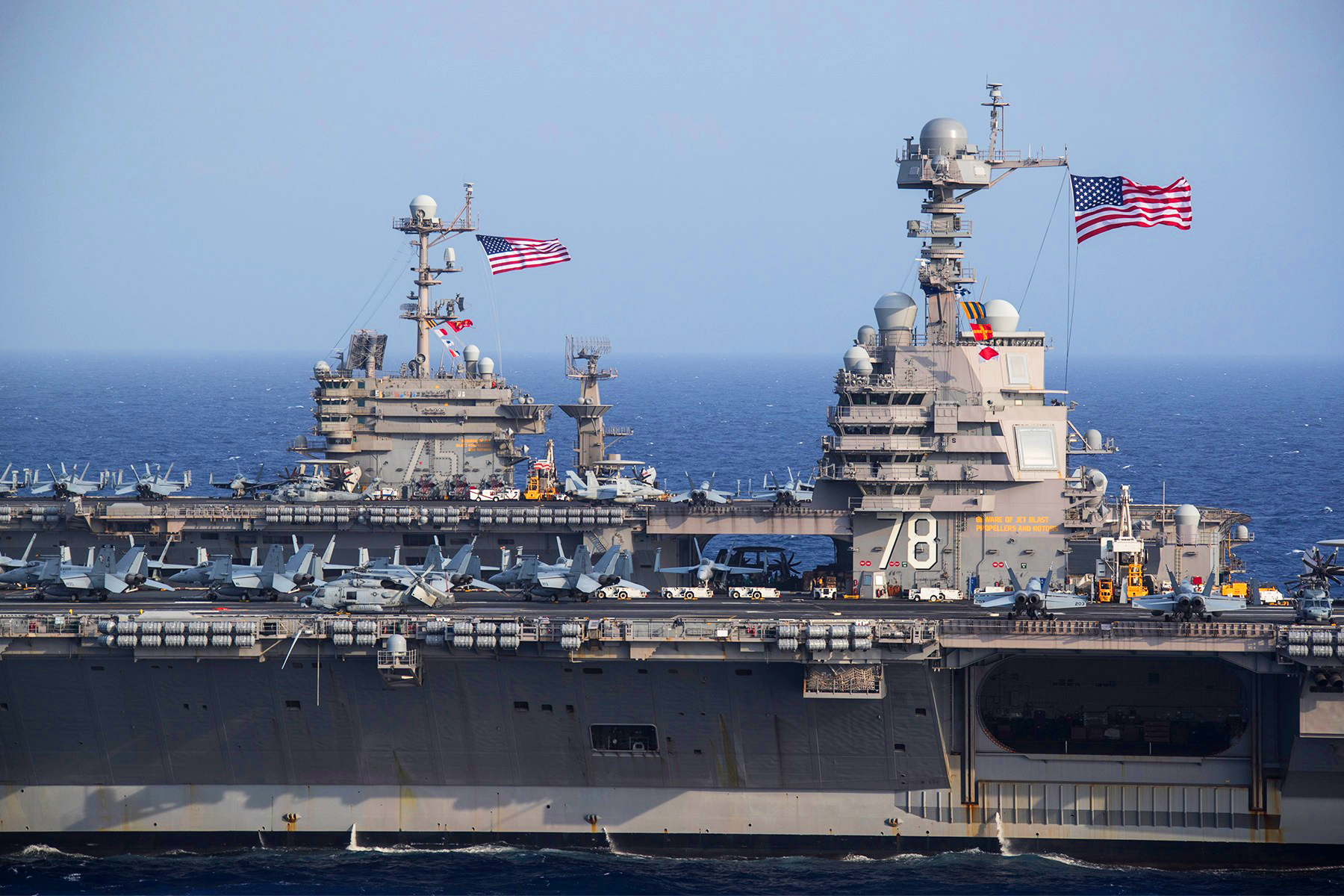
Its unique shape comes from the requirement to house its active electronically scanned array (AESA) Dual Band Radar (DBR). This radar has six separate arrays, one smaller and one larger on three of the island’s sides, providing 360-degree coverage around the ship. The old spinning 3D and 2D radars that have been staples on earlier carriers have been totally eliminated. The DBR, which has been mired in its own developmental and technical issues, has effectively been canceled going forward. The Enterprise Air Surveillance Radar (EASR), which uses just three arrays and will have major commonality across the Navy’s flattop fleet and among many of its new surface combatants, will be installed on all other Ford class carriers from the future USS John F. Kennedy (CVN-79) onward. You can read all about EASR and its future aboard the Navy’s flattops and other ships in this past piece of ours. Regardless, the point here is that the DBR is now a one-off unique to Ford, but the island design won’t change much because it will still need to sport the EASR’s three large active electronically scanned arrays (AESA).
The images below show the overall configuration of both ships and the differences in their deck layouts. The Ford class has just three aircraft elevators instead of four, but their placement and larger size are supposed to actually enhance operations, not hinder them. The Navy also says that the larger flight deck area will help the ship achieve its goal of being able to execute 25 percent more sorties per day than its predecessor, an aspiration that is still far from being realized at this time.
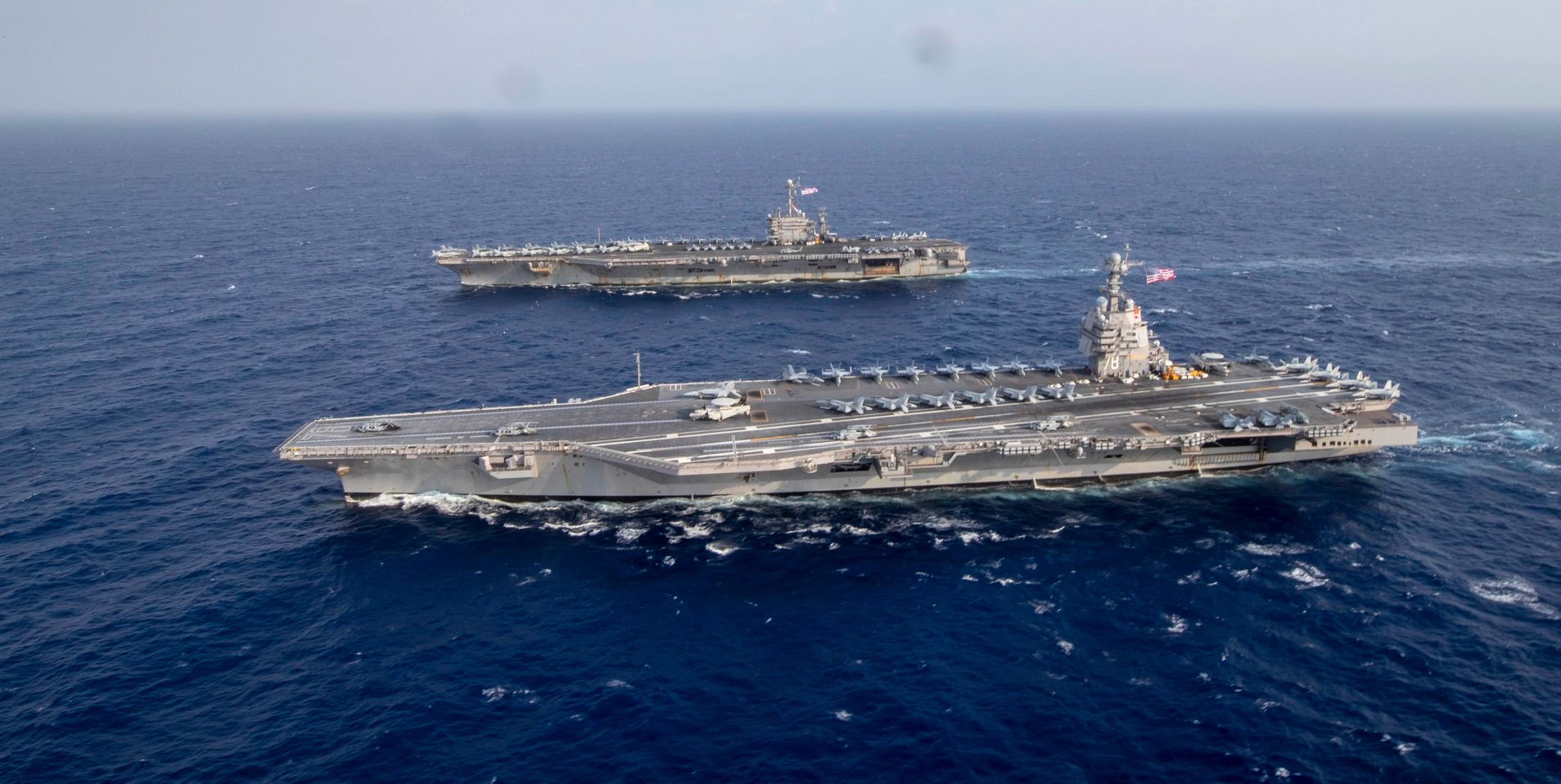

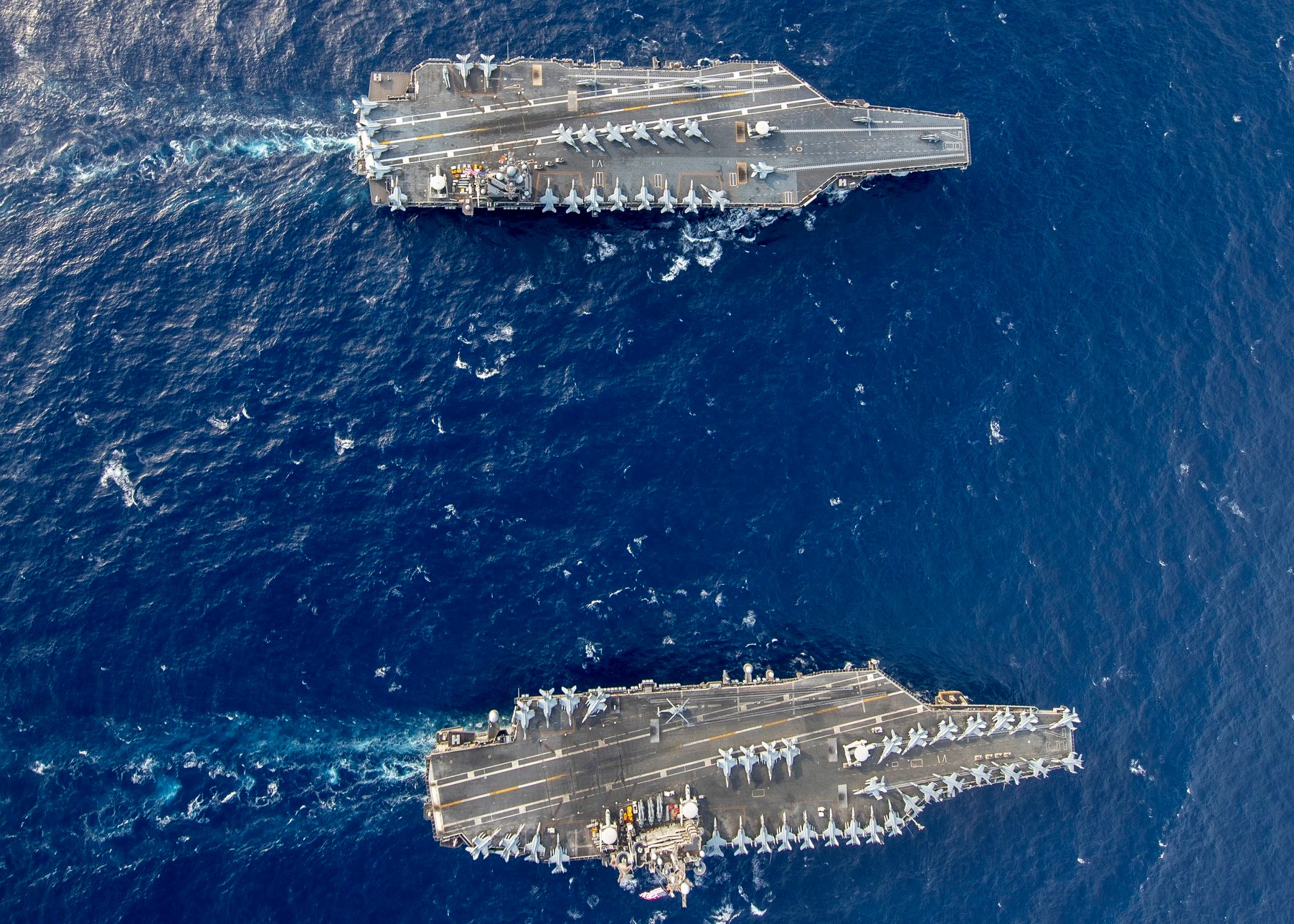
Another big change is the large and box-like ‘wing’ structures on the Ford’s stern. These provide a large increase of room on the hangar deck for storage, work areas, and more. Topside they offer a large surface area for mounting future defensive weaponry, such as lasers, and sensors to be mounted. They could even possibly accommodate a vertical launch system of some sort one day.
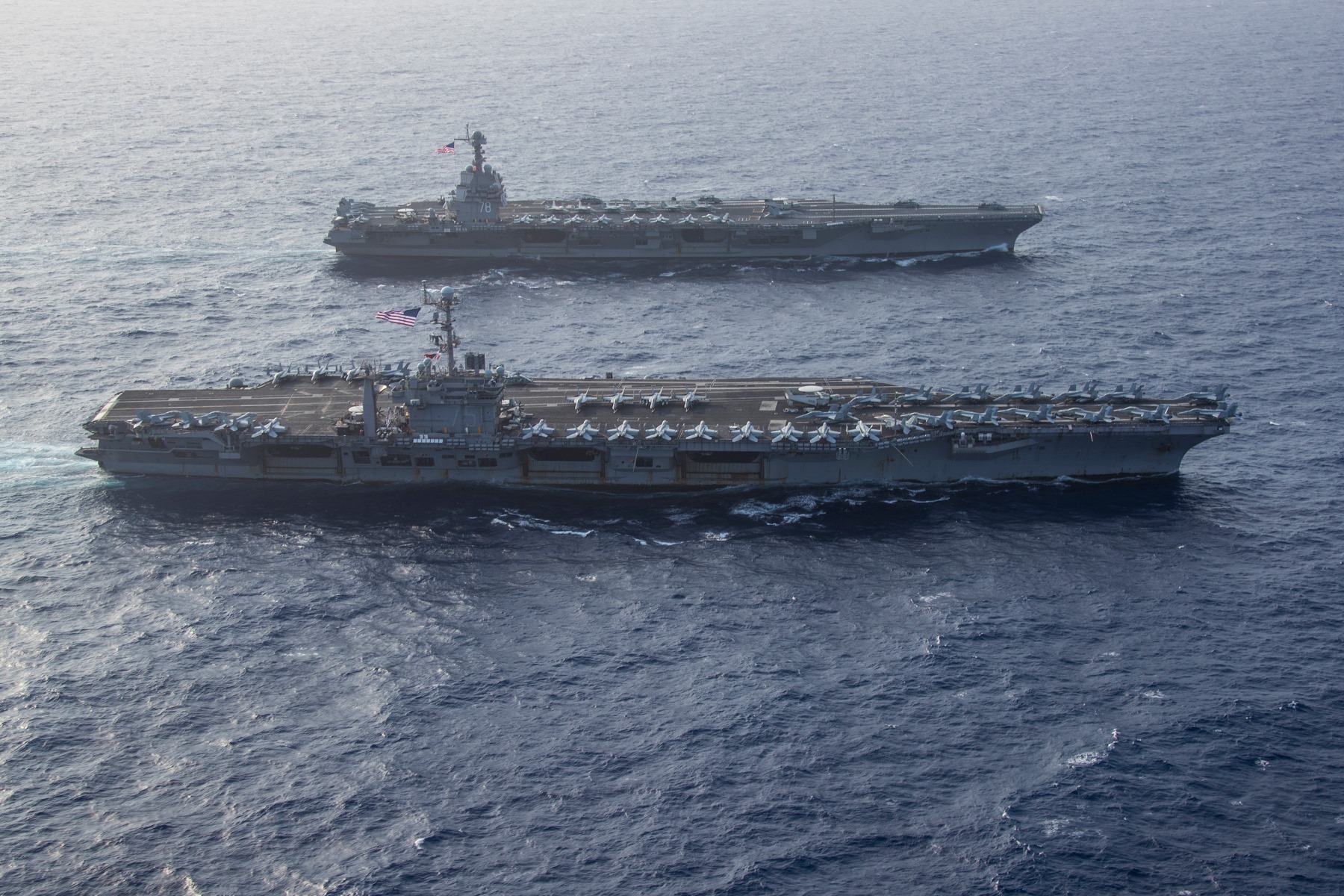
These are just some of the major external design changes you can see in these images. A seemingly endless list of changes lies beneath the Ford’s skin, many of which you may never even notice, but they are drastic departures in their own right from their predecessors.
You can learn all about how the Navy ended up with the design for the Ford class in the video below. Some of it has aged very poorly, but it stands as a historical reference as to how this ship design, regardless of its troubled state, came to be. We plan on doing a post on this video alone in the future, but it is highly relevant to this article, so enjoy!

Contact the author: Tyler@thedrive.com
